“Leslie Charleville: Preserving Life Through Art” Reception
Join us at the Louisiana Art & Science Museum on Monday, March 31 at 5 PM for the reception following the annual Meeting of the Membership.
The public is welcome to join the reception at 5 PM celebrating LASM employee, Gyotaku artist, and Louisiana Ambassador Leslie Charleville. The event honors her recent article in Garden & Gun Magazine.
The reception is open to the public and generously sponsored by Union Pacific Railroad.
Leslie Charleville: Preserving Life Through Art
Louisiana artist Leslie Charleville specializes in gyotaku, a traditional printmaking technique that allows her to capture the essence of marine life in striking detail. Her work includes prints of crabs, octopuses, and even a spiderweb, but she is best known for her large-scale alligator prints. Printing these massive creatures, some surpassing her in size, requires strength, adaptability, and a deep appreciation for each animal’s unique characteristics.
For Charleville, gyotaku is more than an art form; it is a way of honoring and preserving the legacy of these creatures. “Hunting and fishing are a way of life here,” she explains. “For me, there’s no better way to honor an animal than to capture its memory and give it a new life on canvas.” Her work, including a Garden & Gun magazine feature, has gained national recognition.
In addition to her artistic practice, Charleville serves as Special Events Manager at the Louisiana Art & Science Museum. She is the only Louisiana Ambassador representing visual art for the Lieutenant Governor. Whether working in a gallery or on a remote dock, she remains dedicated to her craft, always ready with ink, fabric, and an eye for detail that brings the spirit of her subjects to life.
Gyotaku: The Art of Fish Rubbing
Gyotaku, meaning “fish rubbing,” is a printmaking technique that originated in Japan in the 17th century. Fishermen used it to document their catches, applying sumi ink—a rich black ink made from soot and animal glue—directly onto fish before pressing them onto rice paper to preserve their exact size and features.
Today, artists like Leslie Charleville have adapted this technique using modern materials such as water-based paint on linen, canvas, and paper. Gyotaku captures more than just the shape of an animal. It preserves its textures, markings, and even traces of its DNA. Each print is a unique record, honoring the natural beauty of marine life.
Follow us on Facebook (Louisiana Art & Science Museum) and Instagram (@lasmbr) for updates on future public programs.
